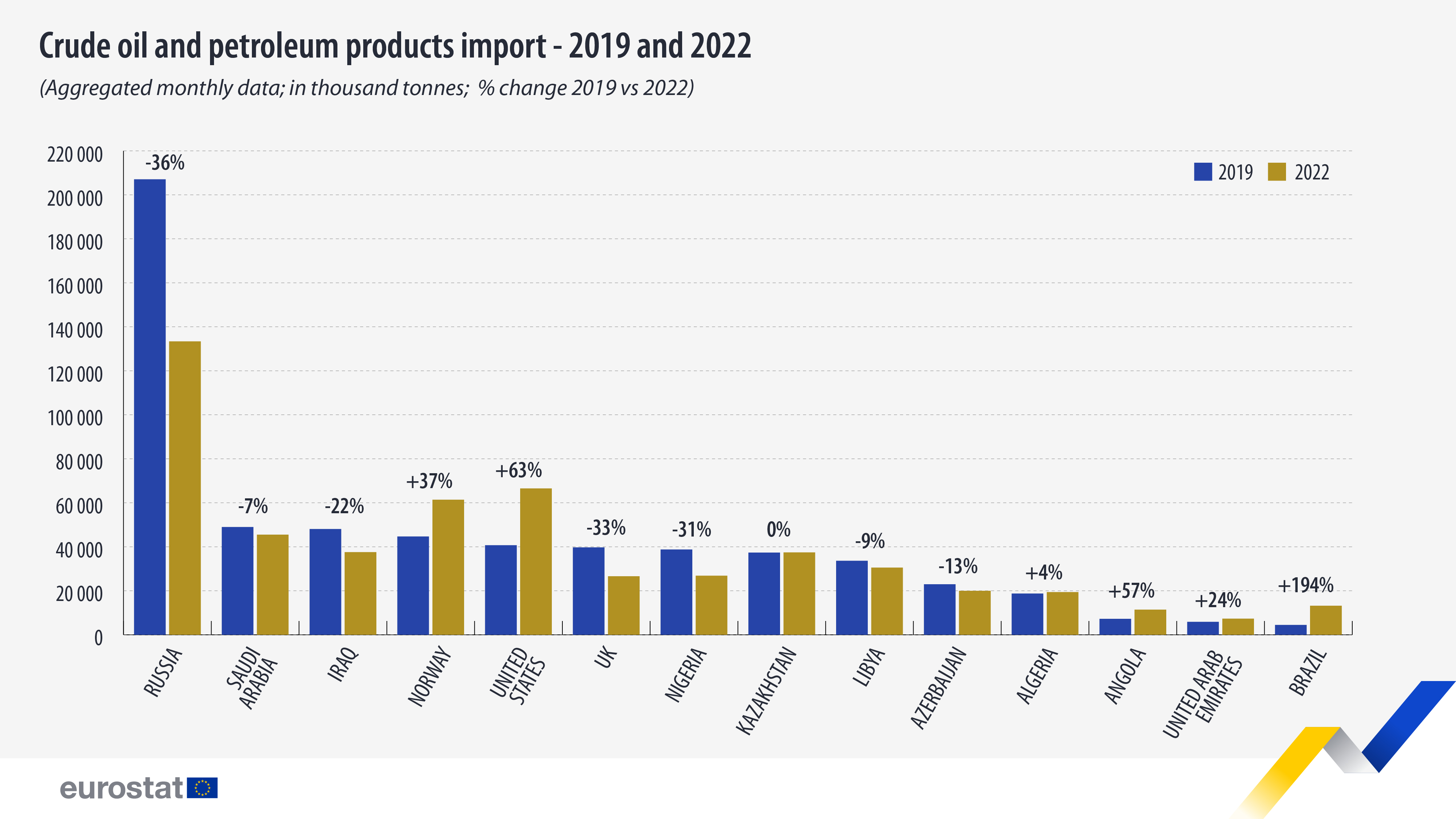Oil and petroleum products trends in 2022

In 2022, the energy sector faced enormous challenges. The Russian invasion of Ukraine and related sanctions imposed by the EU on Russia resulted in a considerable impact on markets, which, together with the transition to renewable energy and increasing energy, oil and gas prices at the end of 2021, made everyone’s life harder.
With Russia being the largest supplier of fossil fuels to the EU, oil was one of the energy mix components most affected by the conflict, and while demand stayed stable, imports of oil and petroleum products from Russia decreased from 15 724 thousand tonnes to 6 248 thousand tonnes in just 12 months. Compared with 2019, oil imports from Russia dropped from 207 070 thousand tonnes to 133 380 thousand tonnes in 2022 (-36%).
This created space for other import partners to increase their supply. Compared with 2019, the United States increased their annual export to the EU by 25 813 thousand tonnes (+63%), Norway by 16 695 thousand tonnes (+37%), Brazil by 8 711 thousand tonnes (+194%), Angola by 4 140 thousand tonnes (+57%) and the United Arab Emirates by 1 435 thousand tonnes (24%).
In addition, the EU allowed for two emergency stock releases in 2022 (1 March, 1 April) to stabilise the market.
Source dataset: nrg_ti_oilm
For more information
- Statistics Explained article on energy statistics - latest trends from monthly data
- Council Regulation (EU) 2022/1369
- REPowerEU: affordable, secure and sustainable energy for Europe
- Dedicated section on energy
- Database on energy
Methodology note
- Consumption of natural gas includes both gaseous natural gas (GNG) and liquefied natural gas (LNG) and is calculated as follows: production + imports – exports +/- stock changes.
- Cyprus does not use natural gas.
If you have any queries, please visit our contact us page.

